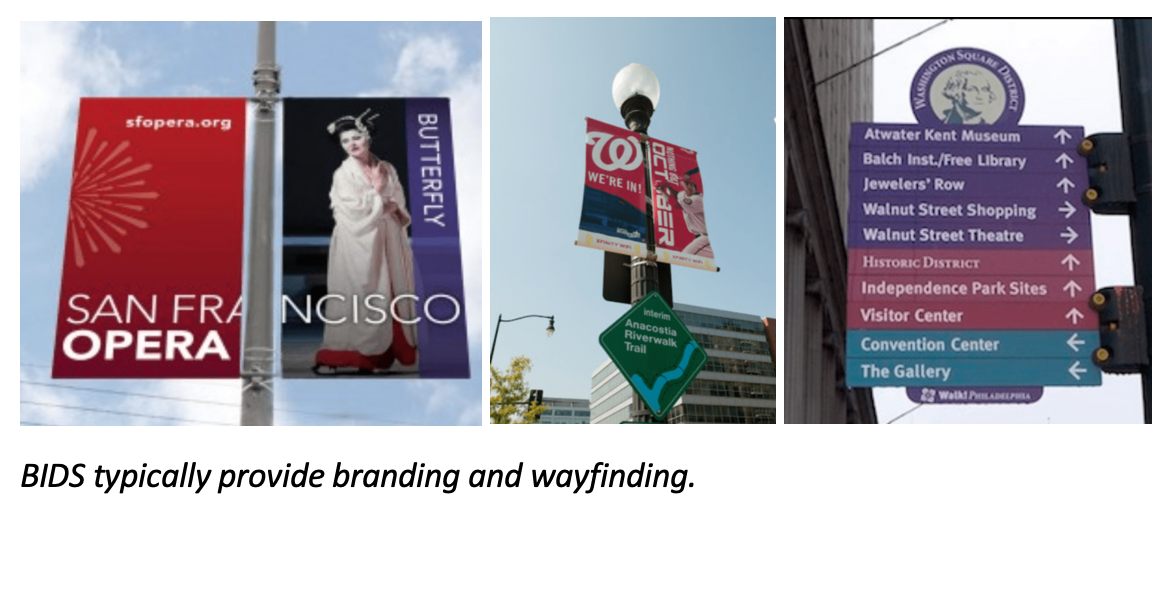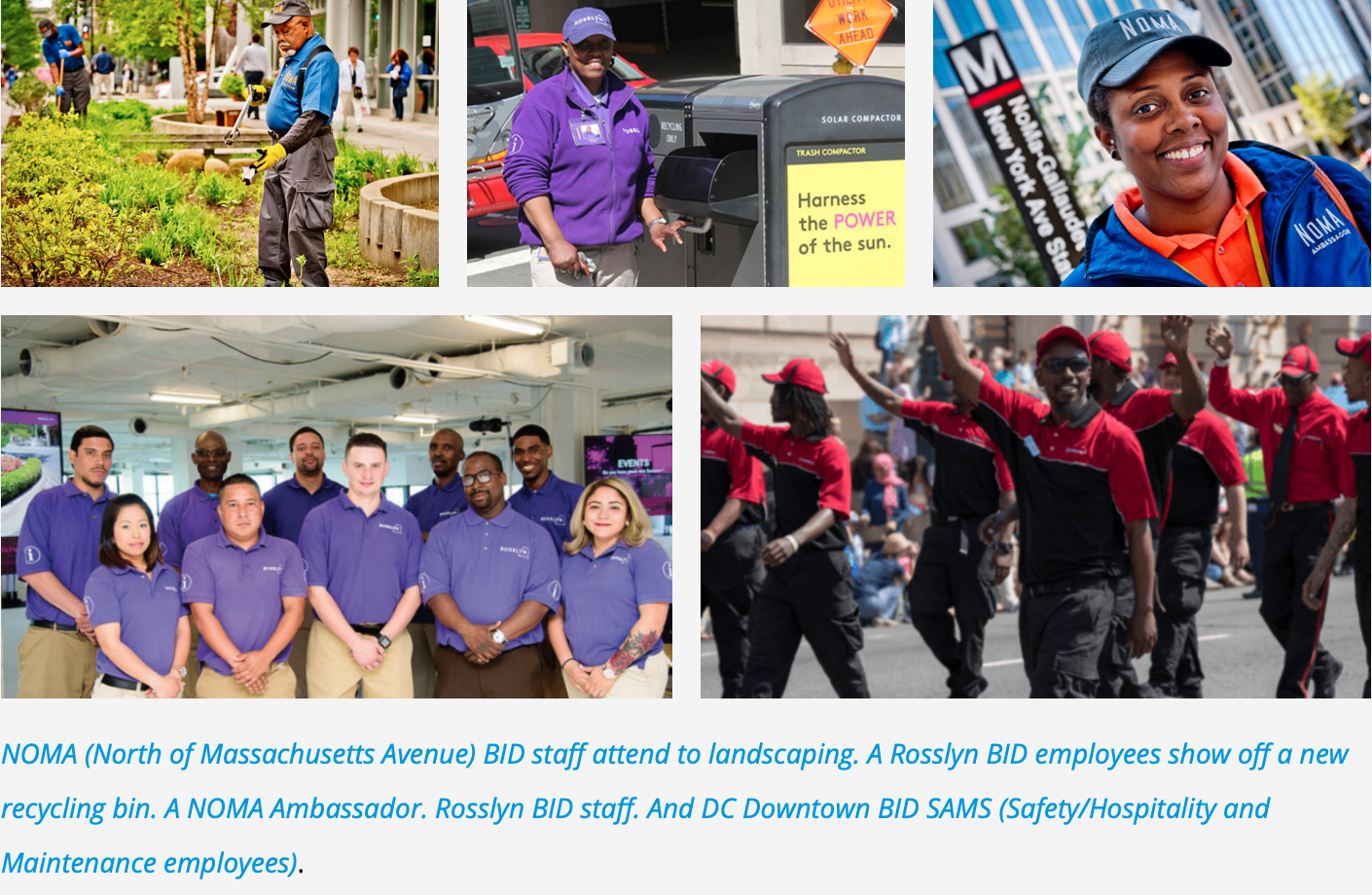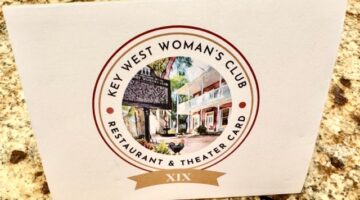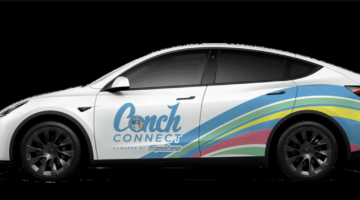Streets for People / Do Key West Commercial Areas Need Business Improvement Districts (BIDS)? – Part 1: What’s A BID?
In Key West we’ve seen budding support for putting in parklets to widen the sidewalks, for restaurants and retailers to “take the streets” and even for some semblance of the return of Mall-on-Duval-like activities. Advocates have been calling for commercial streets that are more pedestrian oriented. The City’s COVID Recovery Plan recommends free transit, moving businesses outdoors and creating marketing and related support for local retailers. The City, in fits and starts, is trying to embark on a Duval Street Revitalization Study, envisioning a better looking and functioning N. Roosevelt business corridor, and conducting workshops aimed at projects to enhance the Mallory Sq./Sunset Celebration experience. And during the last year, the wonderful Mom&Pop Business Key West group was formed, to give local business operations a voice to improve things. It seems a missing element in all this is someone to organize and help businesses accomplish activities that will help them, and their immediate neighborhoods prosper. The businesses are too busy running their businesses and the City, well, they could probably use some help too. Might the answer be one or more Business Improvement Districts or BIDS in our commercial areas?
This is a big subject, so, we’re going to break this into two stories. This week, in Part 1 – What’s a BID? we’ll aim to answer that question. Next week in Part 2 – What BIDS in Key West Might Look Like, we’ll explore where BIDS might be able to help, how they might function and what they may be able to accomplish that isn’t happening now.
Part 1 – What’s a BID?
According to Wikipedia, BIDS are special commercial districts within a city overseen by a non-profit entity, typically funded by some sort of taxing authority with the money going towards improvements and services within the area. BIDs often rely on other sources of revenue, in addition to the tax assessment, to fund their operations. Services financed by a BID are intended to enhance existing city services, not replace them and/or provide services the city doesn’t do. BIDS work towards both a physical and commercial transformation of clean and safe streets, active public spaces and vital retail that creates a sense of place.

The International Downtown Association (IDA) says: “A Business Improvement District (BID) is a public/private partnership in which property and business owners elect to make a collective contribution to the maintenance, development and promotion of a commercial district.” Since the 1970’s nearly 1,000 BIDS in big cities (New York City has 76) and small towns across North America have popped up. Wikipedia says “Often, BIDs are formed as a result of property owners in a defined district who seek funding for a variety of services, including governmental services such as cleaning and maintenance, non-governmental services such as marketing and promotion or beautification, and the implementation of capital investments.” As a Department of Transportation employee of Arlington County, Virginia government, I worked closely with six Arlington, Virginia business improvement districts over the years – each one being indispensable to helping its neighborhood thrive. Each one was very different, reflecting the attitude of a specific neighborhood but at their core, they were all about making their commercial neighborhood a place where people wanted to be.
I got to work with the DC Downtown BID on birthing and branding a brand new downtown circulator bus and with the Crystal City BID on starting bikeshare in Arlington. Both were huge undertakings that needed a push, planning and even funding to get the two local governments on-board. In both cases had the BIDs not taken the lead, the local governments would not have implemented the projects. And in both cases their neighborhoods were better for the having the project.
I witnessed local BIDS do small things like provide ambassadors on the street to welcome people and provide them with directions. They helped small shops with permits and applications. The local BIDS did extra sweepings of the streets and emptying of the trash cans. They sponsored branded benches, bus stops and recycle bins. They provided maps and wayfinding signage. ALL of the BIDS I worked with promoted walking, biking and transit because they knew that was better economically for their small business owners. They directed workers and visitors to long-term parking and shoppers to short-term parking. They fostered farmer’s markets, block parties, movie nights, lectures, gallery walks, first Friday events to promote businesses and full blown one and two-day festivals of all sorts. And when the home teams went to the playoffs or when it was a holiday or special occasion, they made sure the street light poles were festooned with flags sharing the moment as a neighborhood. They helped foster a stronger sense of place and belonging.
Typical BID Services
Every business improvement district is different and what they do, and offer may change over time. But my experience and the literature on the subject suggests the following are typical business improvement district type services:
- Supplement maintenance, sanitation and cleaning
- Supplement security
- Supplement or provide landscaping and landscaping maintenance
- Provide welcoming services including “Ambassadors” on the street
- Conduct research and analyze economic, demographic and psychographic data
- Provide parking and alternative transportation information and promotion so visitors don’t clog downtown looking for parking
- Provide unified marketing services and promote businesses
- Help brand or rebrand a district to impart a new, more positive or unified identity
- Connect property owners with the right tenants
- Promote and expand district business activity, thereby creating more jobs and furthering economic vitality or revitalization. A BID, in effect, acts as a localized chamber of commerce
- Initiate event planning and production – think what Nadene Grossman Orr’s wonderfulKey West Event’s does for Fantasy Fest and this is what BIDS do for their members
- Advocate and promote civic art installations in public spaces or on publicly visible private properties in the district
- Advocate and lobby on behalf of businesses to City Hall
- Provide unified wayfinding signage
- Report potholes, broken streetlights, malfunctioning traffic signals, illegal dumping and other urban shortcomings
- Foster best use of precious curb space
- Foster or generate starts for eventual City programs like circulator buses, carsharing and bikeshare programs
- Initiate small capital improvements by funding or installing:
- trees and landscaping
- bike racks
- benches
- street furniture
- parklets
- water fountains
- public amenities such as bathrooms
If there’s a function a city doesn’t provide, many BIDS step in to do it if that’s what their members want.

Financing
Architecture professor and Washington Post columnist Roger K. Lewis in an article about How a BID Helps explains “BIDs are financed primarily through a dedicated, add-on BID tax, assessed over and above normal real estate taxes. Only businesses within the improvement district pay the extra tax. Typically, the jurisdiction collects the additional BID tax, which is then available to the BID for its budgeted operating costs. However, BIDs are not official government agencies but, rather, function as independent, nonprofit organizations.” The Center for Innovative Finance Support adds “BIDs often rely on other sources of revenue, in addition to the tax assessment, to fund their operations.” I’ve also seen BIDS where the local government, in addition to the services it already provides in the BID Area, gives annual cash matches and allows the BIDS to access the City’s capital budget. There are likely as many ways to finance a BID as there are BIDS.

Typical BIDS operate on budgets that are a couple to a few million dollars annually. In New York City the 75 bids average an annual budget of $2 million with a couple of them topping $5 million and a few that have budgets much less. The brand new Flagler District BID in Miami is targeting a $1 million first year budget. In Arlington, VA the Crystal City BID, mentioned above, had a $2.8 million annual budget and a tax rate of $0.043. The Ballston BID had a $1.6 annual budget and a $0.053 tax rate. The Columbia Pike Revitalization Organization had a budget of about $550,000. So, you can see there’s quite a range.
Formation
Typically, BIDS begin when a group of local businesspeople or a local business organization petitions a City to legally create one. Using Google, we found 16 BIDS within the State of Florida. There may be more. Our cursory look showed these BIDS vary from seemingly very independent entities to little more than an arm of the local City government – in so much as the BIDS website resided on the locality’s website. Florida State statue permits communities who wish to join forces to increase beautification project along with marketing, public relations and promotional efforts to hold a ballot election of property owners to form a Special Neighborhood Improvement District. The local government must first adopt an ordinance authorizing the creation of these districts and then must approve the creation of each district within the rules adopted by the State of Florida.
Florida Business Improvement Districts
To help ground us for next week’s article where we discuss Key West, here are some nearby Florida BIDS: South Miami BID, Winwood BID, (Miami), The Beach BID (Fort Lauderdale), Flagler District BID (Miami), City of Palm Bay BID, Coconut Grove BID (Miami), Lincoln Road BID, Fifth Avenue South BID (Naples), St. Armonds Special Business Neighborhood Improvement District (Sarasota), International Drive BID/TMA (Orlando), Downtown South BID (Orlando), Downtown Orlando Central District BID, Downtown Jacksonville, Downtown Coral Gables BID, Tampa Downtown Partnership, Westshore District Tampa Bay.
Sources for Additional Research on BIDS
To further ground the discussion, here are links to the research done for this article:
- Business Improvement Districts in the United States– Wikipedia
- City of Key West Annual Budget 2019-2020, Key West Bight Fund 405
- Key West Historic Seaport– website
- International Downtown Association(IDA) – website
- Partnerships and BIDS, Arlington Economic Development website
- National Landing BID (former Crystal City BID), Arlington, VA
- DC Downtown BID, Washington, D.C.
- A to Z of Business Improvement Districts, Project for Public Spaces
- How a Business Improvement District Helps, Roger K. Lewis, Washington Post
- Betting On Bids, Larry Houston’s Urban Public Places and Business Improvement Districts blog
- Business Improvement Districts – Self-Help Downtown, Compilation of Articles, International Economic Development Council
- Business Improvement District Fact Sheet, Center for Innovative Finance Report, U.S. DOT FHWA
- BIDS Bring Financial and Community Benefits to Miami-Dade’s Neighborhoods, by Many Gonzalez, Miami Herald
- City Plans Duval Revitalization – Long Term Plan Rolls Out, Sarah Thomas, September 2019, Keys Weekly
Could BIDS Be Helpful in Key West?
We hope we’ve given some basic information about BIDS that will make for a useful discussion next week about Key West. If you have some ideas either drop me a line or go to our Friends of Car-Free Key West & Duval Street/Historic Downtown web page and leave some comments or questions.
Does Duval Street need a BID? What about the greater downtown historic district? Or perhaps a micro-BID on White Street? Or one or more BIDS to organize the commercial areas along N. Roosevelt Boulevard? Or even in the bourgeoning “downtown” Stock Island? Did you know our Historic Seaport already acts like a BID? We’ll explore all of this next week in Do Key West Commercial Areas Need Business Improvement Districts? – Part 2: What BIDS in Key West Might Look Like.
# # #
You can find all the KONK Life Streets for People column articles here and recent stories below:
- The Good, the Bad and the Ugly – A Dozen Marketing Things KW Transit Can Do to Increase Ridership; April 9, 2021
- The Sorry State of Key West Bus Stops – We Just Don’t Care; April 2, 2021
- It’s Time to Reconsider a Road Diet on S. Roosevelt and Make the Promenade and Road Safer; March 26, 2021
- Getting the Parking Right Leads to Streets for People – Part 2: Battling Our Inner George Costanza – Ten Things We Can Do in Downtown Key West to Get the Parking Right; March 19, 2021
- Getting the Parking Right Leads to Streets for People – Part 1: Nobody Goes there Anymore. It’s Too Crowded – Six Reasons for Right Pricing Parking; March 12, 2021
- Eight Things We Can Do to Pedestrianize Duval and Still Allow Cars, March 5, 2021
- How We Get Wider Sidewalks Downtown Without Ripping Up the Streets – Parklets; February 26, 2021
- The Wee Donkey, Whataboutism, Bathwater and Duval Street’s Future; February 19, 2021
- Averting E-Bike Mayhem and Making Key West Sidewalks Safer; February 12, 2021
- Sustainability Board Wants to Make Free, Frequent and Simple Key West Transit a Reality, February 5, 2021
- Volunteers and a Little Green Paint Show How We Can Make it Safer to Bike; January 29, 2021
Chris Hamilton is founder of the local advocacy group Friends of Car-Free Key West & Duval Street/Historic Downtown. He’s a native of the District of Columbia, where for a couple decades+ he led nationally renowned efforts promoting transit, bike, walk and smart growth for Arlington County, VA’s DOT. Chris has lived in Key West since 2015. He lives downtown and works and volunteers for a couple non-profits.
[livemarket market_name="KONK Life LiveMarket" limit=3 category=“” show_signup=0 show_more=0]





No Comment